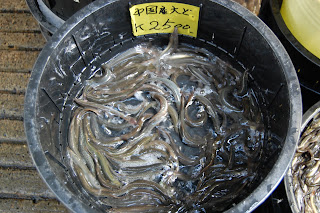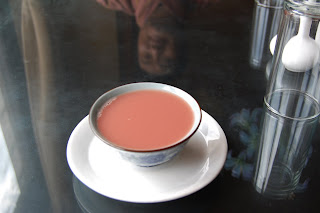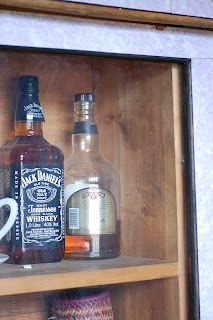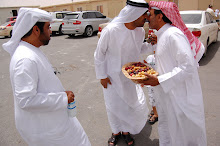The sad death of Santi Santamaria had me reminiscing about meeting and interviewing the great Catalan chef. It was 2009, he'd just opened Ossiano, the stunning seafood restaurant in Atlantis, The Palm, and I'd been invited to dine with Santi and a number of other guests. The food was as great, as you'd expect, incredible Spanish seafood cooked with heart. Santi was very keen to learn about the restaurants of Dubai, but I'm not sure if he ever had time to explore the places we talked about. Either way, he was a fine host with a genuine passion for food, and in particular, his food.
I interviewed him before dinner. It had been one of those interviews where we forgot the dictaphone was running, and just talked. Of course, Santi didn't speak English, and my Catalan was rusty, so an interpreter was on standby. The bulk of the interview was about molecular gastronomy. Santi was in vociferous opposition to it, and while he respected the work of fellow Catalan chef Ferran Adria, he was a passionate advocate of a more natural style of cooking.
The excerpt below is nothing if not passionate, but it was also very prescient - the following year, Adria's El Bulli restaurant was knocked off the top spot of the San Pellegrino World's 50 Best Restaurants list by Noma, a restaurant that's dedicated to the use of natural, locally sourced ingredients.
Take it away, Santi...
“I really think that this style of cooking (molecular gastronomy) will destroy the brains of the people. People who eat this will end up with something like mad cow disease. It’s not honest to take a chemical powder and put it in food that people eat. It’s not a natural ingredient. This is a big mistake. You don’t need chemical gimmicks to make good food. When you eat natural products you really understand what they are, the fish or the vegetables, you understand where they are from and why they have the flavour.
When somebody asks you what is the best cuisine, you would probably say it’s the cuisine you remember - it’s the one your mother or grandmother made for you. It has a personal connection. But in following molecular gastronomy we will kill all the traditions that our mothers and grandmothers knew. In the future the people’s food of memory will be chemical food. I want to pass my cultural richness onto my sons, and their sons. We can always add creativity in cooking natural ingredients. I am always open to finding new ways of treating and cooking natural products, I’m open to innovation. But I will always respect the natural products.
I’m afraid that molecular gastronomy can go on for generations because there’s a lot of money behind it. Martin Berasategui, the chef from San Sebastian with three Michelin stars, said last week that the magazine (Restaurant Magazine) which named El Bulli the best restaurant in the world is only made by a handful of people. It’s a marketing operation. The people who vote for the moleculars might know that they are not the best, but there is such a marketing pressure behind this that they are not interested to say otherwise. It is very sad that the chefs need a gimmick to make themselves noticed by these people.
In the past, when chefs acquired three michelin stars, there was a mutual respect between all of them. It was like a professional standard or qualification, like a doctorate. But for some chefs that is not enough. In the past there would be sixty or seventy in Europe. But there were some chefs who said they wanted to be the best of the best. There was a marketing push to name the best of the three-Michelin star chefs. And they created a lobby or pressure group, who are a danger to the real cuisine, because they are saying the best are the moleculars.
I respect the desire of molecular gastronomes to evoke memories and emotions in food. But I do not respect the method. I’m really against the (Spanish) government, which gives money and subsidises molecular gastronomy. When the government of Spain takes molecular gastronomy and says this is the representative cuisine of Spain, it’s about marketing, money and publicity - from only one way. The government doesn’t represent me, or many other more traditional Spanish chefs. Any cuisine can represent Spain - the traditional, the classic, the modern - but not just one, it is a mix. From my point of view, I am really upset about this.
In my cuisine, what’s most important is the product and the way it is cooked, the precision, the details. With molecular gastronomy, they substitute the chef for machines. With traditional cooking, a chef invents a dish, he believes in his creation, he cooks it and he puts it on the plate. To make this recipe, you need a chef. With molecular gastronomy you don’t need a chef, you just need someone who puts the powder in a machine, who injects a chemical solution. It’s industrial. It’s like a factory.
Haute cuisine of the future will not be molecular gastronomy. We will go back to the respect of the products, respect of the fisherman who catches the fish, respect of the farmer who grows the vegetables, respect of the butcher who cuts the meat and so on. In too short a time so many things have happened, and it’s getting out of control. We need to settle things down. It can not go on like this. It’s all about money. What is killing the cuisine is the fact that these chefs are celebrities, and they all want to make it big to get as much money as possible.
I have respect for the people who create the dishes, who mix this with that to make something new. But after that it becomes a copy of a copy of a copy. It’s always the same - where is the art, where is the creativity? It’s like a musician appearing every night but having the same tape played back. The stage is set, there are fireworks, it all looks very nice, but behind the curtain is a tape machine. It’s always the same. Molecular gastronomy is playback.”











































